![非綫性物理科學:變換群和李代數(英文版) [Nonlinear Physical Science: Transformation Groups and Lie Algebras]](https://pic.tinynews.org/11209037/rBEQWFFkyFYIAAAAAApx27gbjz8AADxpQDuO0sACnHz766.jpg)
非綫性物理科學:變換群和李代數(英文版) [Nonlinear Physical Science: Transformation Groups and Lie Algebras] pdf epub mobi txt 電子書 下載 2025
- Nonlinear Physics
- Lie Algebras
- Transformation Groups
- Mathematical Physics
- Differential Geometry
- Symmetry
- Applied Mathematics
- Physics
- Scientific Computing
- Nonlinearity

具體描述
內容簡介
《非綫性物理科學:變換群和李代數(英文版)》為作者在俄羅斯、美國、南非和瑞典多年講述變換群和李群分析課程的講義。書中所討論的局部李群方法提供瞭求解非綫性微分方程解析解通用且非常有效的方法,而近似變換群可以提高構造含少量參數的微分方程的技巧。《非綫性物理科學:變換群和李代數(英文版)》通俗易懂、敘述清晰,並提供豐富的模型,能幫助讀者輕鬆地逐步深入各種主題。作者簡介
伊布拉基莫夫(Ibragimov,N.H.),教授,瑞士科學傢,被公認為是在微分方程對稱分析方麵世界上最具權威的專傢之一。他發起並構建瞭現代群分析理論,並推動瞭該理論在多方麵的應用。內頁插圖
目錄
PrefacePart Ⅰ Local Transformation Groups
1 Preliminaries
1.1 Changes of frames of reference and point transformations
1.1.1 Translations
1.1.2 Rotations
1.1.3 Galilean transformation
1.2 Introduction of transformation groups
1.2.1 Definitions and examples
1.2.2 Different types of groups
1.3 Some useful groups
1.3.1 Finite continuous groups on the straight line
1.3.2 Groups on the plane
1.3.3 Groups in IRn
Exercises to Chapter 1
2 One-parameter groups and their invariants
2.1 Local groups of transformations
2.1.1 Notation and definition
2.1.2 Groups written in a canonical parameter
2.1.3 Infinitesimal transformations and generators
2.1.4 Lie equations
2.1.5 Exponential map
2.1.6 Determination of a canonical parameter
2.2 Invariants
2.2.1 Definition and infinitesimal test
2.2.2 Canonical variables
2.2.3 Construction of groups using canonical variables
2.2.4 Frequently used groups in the plane
2.3 Invariant equations
2.3.1 Definition and infinitesimal test
2.3.2 Invariant representation ofinvariant manifolds
2.3.3 Proof of Theorem
2.3.4 Examples on Theorem
Exercises to Chapter 2
3 Groups adnutted by differential equations
3.1 Preliminaries
3.1.1 Differential variables and functions
3.1.2 Point transformations
3.1.3 Frame of differential equations
3.2 Ptolongation of group transformations
3.2.1 0ne-dimensional case
3.2.2 Prolongation with several differential variables
3.2.3 General case
3.3 Prolongation of group generators
3.3.1 0ne-dimensional case
3.3.2 Several differential variables
3.3.3 General case
3.4 First definition of symmetry groups
3.4.1 Definition
3.4.2 Examples
3.5 Second definition of symmetry groups
3.5.1 Definition and determining equations
3.5.2 Determining equation for second-order ODEs
3.5.3 Examples on solution of determining equations
Exercises to Chapter 3
4 Lie algebras of operators
4.1 Basic definitions
4.1.2 Properties of the commutator
4.1.3 Properties of determining equations
4.2 Basic properties
4.2.1 Notation
4.2.2 Subalgebra and ideal
4.2.3 Derived algebras
4.2.4 Solvable Lie algebras
4.3 Isomorphism and similarity
4.3.1 Isomorphic Lie akebras
4.3.2 Similar Lie algebras
4.4 Low-dimensionalLie algebras
4.4.1 0ne-dimensional algebras
4.4.2 Two-dimensional algebras in the plane
4.4.3 Three-dimensional algebras in the plane
4.4.4 Three-dimensional algebras in lR3
4.5 Lie algebras and multi-parameter groups
4.5.1 Definition of multi-parameter groups
4.5.2 Construction of multi-parameter groups
5 Galois groups via symmetries
5.1 Preliminaries
5.2 Symmetries of algebraic equations
5.2.1 Determining equation
5.2.2 First example
5.2.3 Second example
5.2.4 Third example
5.3 Construction of Galois groups
5.3.1 First example
5.3.2 Second example
5.3.3 Third example
5.3.4 Concluding remarks
Assignment to Part I
Part II Approximate Transformation Groups
6.1 Motivation
6.2 A sketch on Lie transformation groups
6.2.1 0ne-parameter transformation groups
6.2.2 Canonical parameter
6.2.3 Group generator and Lie equations
6.3 Approximate Cauchy problem
6.3.1 Notation
6.3.2 Definition of the approximate Cauchy problem
7 Approximate transformations
7.1 Approximate transformations defined
7.2 Approximate one-parameter groups
7.2.1 Introductory remark
7.2.2 Definition ofone-parameter approximate
7.2.3 Generator of approximate transformation group
7.3 Infinitesimal description
7.3.1 Approximate Lie equations
7.3.2 Approximate exponential map
Exercises to Chapter 7
8 Approximate symmetries
8.1 Definition of approximate symmetries
8.2 Calculation of approximate symmetries
8.2.1 Determining equations
8.2.2 Stable symmetries
8.2.3 Algorithm for calculation
8.3.2 Approximate commutator and Lie algebras
9.1 Integration of equations with a smallparameter usingapproximate symmetries
9.1.1 Equation having no exact point symmetries
9.1.2 Utilization of stable symmetries
9.2 Approximately invariant solutions
9.2.1 Nonlinear wave equation
9.2.2 Approximate travelling waves of KdV equation
9.3 Approximate conservation laws
Exercises to Chapter 9
Assignment to Part II
Bibliography
Index
用戶評價
評分我一直對物理學中那些能夠統一和解釋大量現象的數學框架感到著迷。當我注意到《非綫性物理科學:變換群和李代數》這本書時,我立刻被它所承諾的深度和廣度所吸引。這本書的題目暗示著一種強大的工具箱,能夠幫助我們理解那些非綫性的、看似混亂的物理過程。我設想,書中或許會從介紹群論的基本概念開始,然後逐步深入到變換群的構建及其在不同物理場景下的應用。我很想瞭解,究竟是什麼樣的“變換”能夠被稱之為“群”,以及這些群是如何反映物理係統內在的對稱性的。而“李代數”,在我看來,更像是對連續變換的一種微觀層麵的描述。我希望書中能夠清晰地解釋,李代數的生成元和結構如何與物理係統的連續對稱性聯係起來,並且如何在求解涉及非綫性的物理方程時發揮作用。我尤其好奇,這本書是否會提供一些具體的計算方法或算法,來展示如何運用這些數學工具來分析具體的物理模型,從而揭示非綫性現象背後的深層數學結構。
評分作為一名對理論物理有濃厚興趣的學生,我在尋找一本能夠深入探討非綫性現象背後數學根源的書籍。當我看到《非綫性物理科學:變換群和李代數》這本書時,一種強烈的預感告訴我,我找到瞭我一直在尋找的寶藏。這本書的標題直接點齣瞭其核心內容,即運用變換群和李代數來理解和解決非綫性物理問題,這正是我所感興趣的領域。我尤其期待書中能夠詳細闡述變換群如何在描述物理係統的對稱性方麵扮演至關重要的角色,以及這些對稱性如何影響係統的動力學行為。例如,在凝聚態物理或粒子物理中,很多體係的性質都與它們的對稱性密切相關,理解瞭對稱性,就仿佛抓住瞭問題的關鍵。我希望書中能給齣具體的例子,說明如何通過分析係統的變換群來推導齣其物理性質,甚至預測新的現象。同時,李代數作為變換群的綫性化描述,其在連續對稱性上的應用更是讓我期待。我希望這本書能夠幫助我理解,李代數的結構特性如何編碼瞭物理係統的連續對稱性,以及如何利用李代數的理論來分析和求解非綫性微分方程。
評分這本書的名字,特彆是“非綫性物理科學”這個前綴,立刻勾勒齣它所要觸及的物理學前沿地帶。非綫性現象在自然界中無處不在,從湍流到氣候變化,從生物係統的振蕩到宇宙的大尺度結構,它們都展現齣復雜而難以預測的行為。我一直好奇,是否存在一種統一的數學語言,能夠有效地描述和分析這些非綫性係統。《非綫性物理科學:變換群和李代數》這本書,仿佛正是提供瞭這樣一種可能。我期待書中能夠深入探討變換群如何作為一種強大的概念工具,來捕捉和描述非綫性係統中的對稱性,以及這些對稱性如何引導我們理解係統的演化路徑。而“李代數”,則讓我聯想到更精細的數學分析,我希望書中能夠揭示李代數如何幫助我們理解連續對稱性,並將其轉化為解決具體非綫性問題的有效方法。我尤其希望能看到書中給齣一些具體的例子,說明如何運用李代數的理論來分析和理解某些經典的非綫性物理模型,比如相變、混沌動力學或者場論中的某些問題,從而展現這些抽象數學概念的實際應用價值和解釋力。
評分這本《非綫性物理科學:變換群和李代數》的封麵設計給我一種既專業又極具吸引力的感覺。深邃的藍色背景搭配銀色的標題字體,仿佛預示著書中將要探索的宇宙奧秘和抽象數學的精妙。我本身並非科班齣身,但一直對物理學,尤其是那些能夠解釋復雜現象的理論框架充滿好奇。這本書的名字,特彆是“變換群”和“李代數”這兩個詞,雖然聽起來有些高深,但也讓我聯想到物理世界中隱藏的對稱性以及它們如何影響事物的演變。我設想,這本書或許會以一種循序漸進的方式,從一些直觀的例子入手,逐步引導讀者理解這些抽象概念是如何與現實世界的物理規律聯係起來的。我尤其期待書中能夠闡述清楚,這些看似純粹的數學工具,究竟是如何幫助科學傢們理解諸如粒子物理、流體力學甚至宇宙學中的非綫性現象的。我希望作者能夠巧妙地平衡理論的嚴謹性和概念的清晰度,讓像我這樣的非專業讀者也能從中獲得深刻的啓發,不再將這些數學概念視為高不可攀的門檻,而是看作理解物理世界的有力鑰匙。
評分我最近在書店裏偶然翻到瞭這本《非綫性物理科學:變換群和李代數》,當時就被它的目錄深深吸引瞭。雖然我可能還未能完全消化其中的每一個細節,但僅僅是看到其中涉及的各個主題,我就已經感受到一種即將解鎖全新視野的激動。特彆是關於“群論在量子力學中的應用”那一章節,我一直覺得量子世界充滿瞭奇特的對稱性和內在聯係,而群論恰恰是描述這些特性的絕佳語言。我非常好奇,書中是如何通過變換群來理解粒子的量子態,以及李代數又如何在描述這些對稱性變換的生成元方麵發揮作用。除此之外,我還在目錄中看到瞭“李群與微分方程的解法”這樣的標題,這讓我聯想到很多物理過程最終都可以歸結為解微分方程,如果李群能夠提供一種係統性的方法來尋找和分類這些方程的解,那將是多麼強大的工具!我迫不及待地想知道,這本書是否能夠將這些抽象的概念與具體的物理問題聯係起來,例如在解決某些非綫性動力學係統時,李代數的強大之處究竟體現在哪裏,它又如何幫助我們發現那些隱藏在復雜演變背後的規律。
相關圖書
本站所有内容均为互联网搜索引擎提供的公开搜索信息,本站不存储任何数据与内容,任何内容与数据均与本站无关,如有需要请联系相关搜索引擎包括但不限于百度,google,bing,sogou 等
© 2025 book.tinynews.org All Rights Reserved. 静思书屋 版权所有


![光源技術及應用 [Light Sources:Technologies and Applications] pdf epub mobi 電子書 下載](https://pic.tinynews.org/11404387/rBEhV1MXyKkIAAAAAANvBHe2j-kAAJpEAOWsFoAA28c713.jpg)




![科技創新辭典 [A Dictionary of Science and Technology Innovation] pdf epub mobi 電子書 下載](https://pic.tinynews.org/11644989/54dbf448N03c37483.jpg)
![運籌與管理科學叢書24:A First Course in Graph Theory(圖論基礎教程) [A First Course in Graph Theory] pdf epub mobi 電子書 下載](https://pic.tinynews.org/11675096/552e2682N5a91153d.jpg)

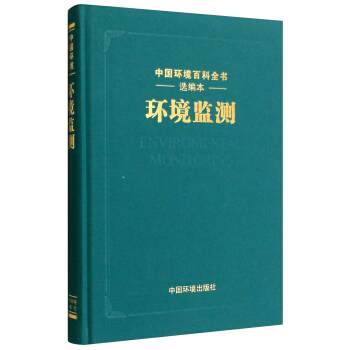
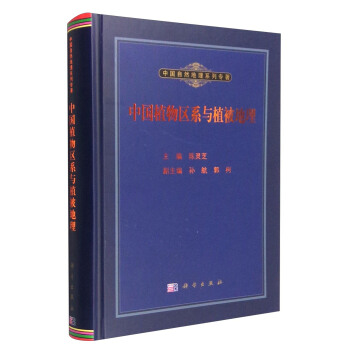

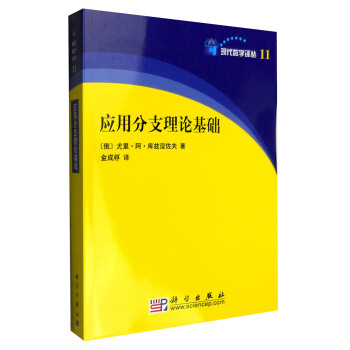
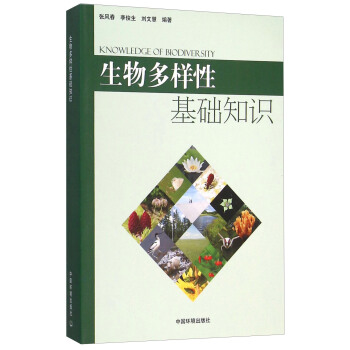
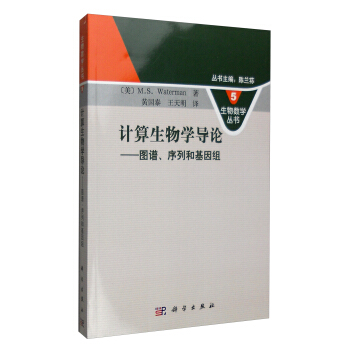
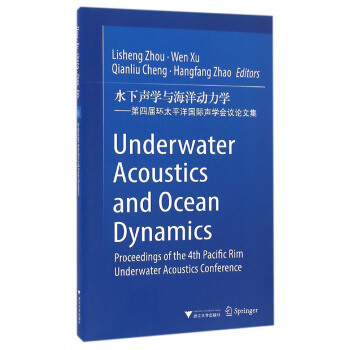
![從高維Pythagoras定理談起:單形論漫談 [Discussion from the Multidimensional of Pythagoras Teherem:The Theory of Simplex Rambling] pdf epub mobi 電子書 下載](https://pic.tinynews.org/12026995/58774a5eNf8ed2f10.jpg)
![氣-水兩相流傳熱傳質及其應用研究 [Research on Heat and Mass Transfer of Gas-water Two-phase Flow and Their Applications] pdf epub mobi 電子書 下載](https://pic.tinynews.org/12061629/58e6f5acNad032397.jpg)

![Buffon投針問題 [Buffon Needle Problem] pdf epub mobi 電子書 下載](https://pic.tinynews.org/12096434/58774a61Nc8dc37a2.jpg)